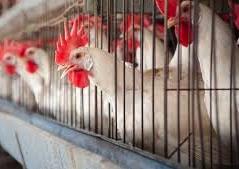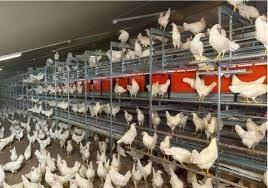 Market research company First Insight interviewed 1,000 consumers and determined that 68 percent of respondents indicated a willingness to pay more for sustainable products. In confirmation a survey of 51 retail business executives disclosed that 34 percent thought that consumers would pay more for sustainable products. Almost half of the business respondents considered that sustainability was an important determinant influencing consumers. These perceptions provide a justification to favor sustainability, with17 percent of consumers citing environmental considerations, 9 percent to reduce waste and only 8 percent concerned over welfare.
Market research company First Insight interviewed 1,000 consumers and determined that 68 percent of respondents indicated a willingness to pay more for sustainable products. In confirmation a survey of 51 retail business executives disclosed that 34 percent thought that consumers would pay more for sustainable products. Almost half of the business respondents considered that sustainability was an important determinant influencing consumers. These perceptions provide a justification to favor sustainability, with17 percent of consumers citing environmental considerations, 9 percent to reduce waste and only 8 percent concerned over welfare.
 Simple questionnaires are inadequate to determine the real motivation to purchase. Conjoint analysis, a more sophisticated technique, actually provides an indication of trade-offs considered by a consumer in selecting a product. The important question is how much weight is assigned to any specific attribute. Voters in California passed Proposition #2 in 2008 and then Proposition #12 in 2018 by two to one majorities. Since the beginning of January 2022, the retail price of Large eggs has increased by 60 cents per dozen. The question arises as to whether the margin of passage for either proposition would have been as high, if all voters knew the financial implication of their decision to mandate cage-free housing with minimal space standards. Every consumer wants welfare, sustainability, food safety, availability, recycled or biodegradable packaging. But at what cost?
Simple questionnaires are inadequate to determine the real motivation to purchase. Conjoint analysis, a more sophisticated technique, actually provides an indication of trade-offs considered by a consumer in selecting a product. The important question is how much weight is assigned to any specific attribute. Voters in California passed Proposition #2 in 2008 and then Proposition #12 in 2018 by two to one majorities. Since the beginning of January 2022, the retail price of Large eggs has increased by 60 cents per dozen. The question arises as to whether the margin of passage for either proposition would have been as high, if all voters knew the financial implication of their decision to mandate cage-free housing with minimal space standards. Every consumer wants welfare, sustainability, food safety, availability, recycled or biodegradable packaging. But at what cost?
 It is unfortunate that ballot initiatives have been proposed and passed and regulations issued without concern for unintended consequences. Prior to the Massachusetts Question #3 ballot on housing of hens, hogs and calves, the issues of the inevitable escalation in price and availability were raised but rejected since the ballot as presented to the electorate became an emotional and subjective issue. So now the consumers in California are paying the Pacelle tax imposed on them by a group of affluent activists and zealots without consideration that one in five children in California are in a state of food insecurity. The extra cost annually to consumers of eggs in the State is estimated to be $40 per family of four. Higher cost will be incurred through consumption of pork products. Perhaps the promoters of ballots to enhance the welfare of laying hens consider child malnutrition a collateral issue and of no concern to their purpose.
It is unfortunate that ballot initiatives have been proposed and passed and regulations issued without concern for unintended consequences. Prior to the Massachusetts Question #3 ballot on housing of hens, hogs and calves, the issues of the inevitable escalation in price and availability were raised but rejected since the ballot as presented to the electorate became an emotional and subjective issue. So now the consumers in California are paying the Pacelle tax imposed on them by a group of affluent activists and zealots without consideration that one in five children in California are in a state of food insecurity. The extra cost annually to consumers of eggs in the State is estimated to be $40 per family of four. Higher cost will be incurred through consumption of pork products. Perhaps the promoters of ballots to enhance the welfare of laying hens consider child malnutrition a collateral issue and of no concern to their purpose.